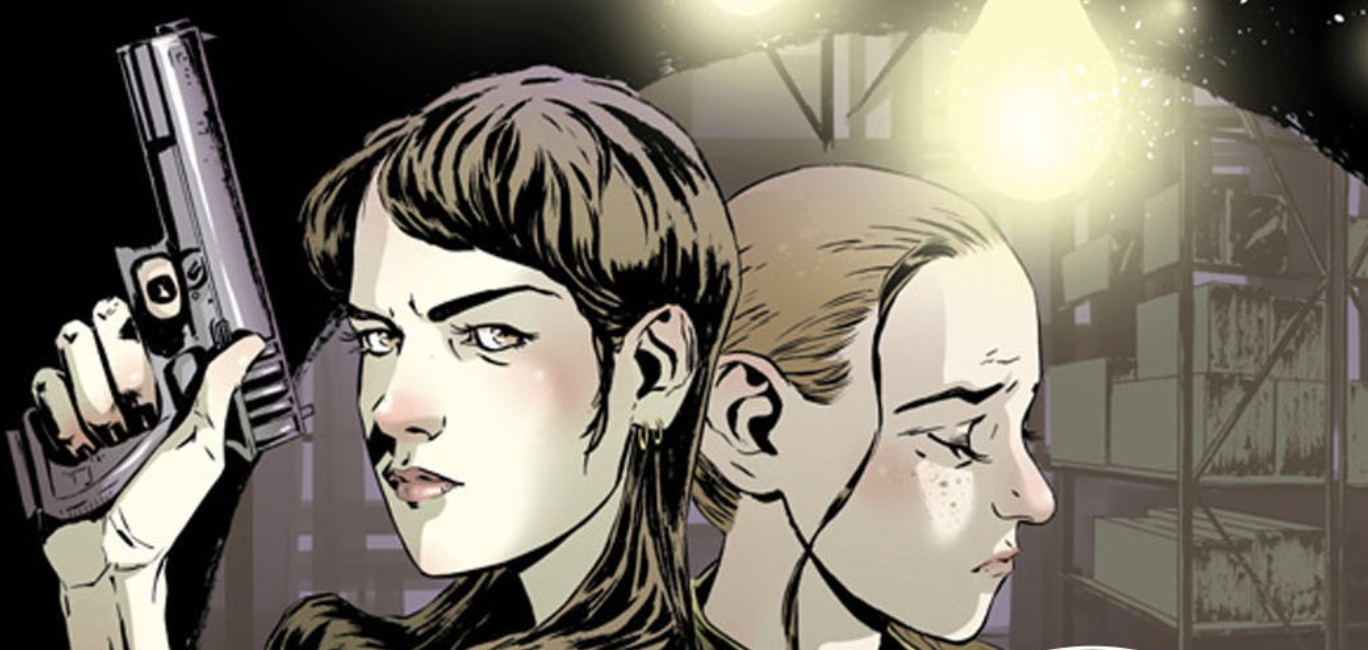Sheltered, Slayground, Brisson, Cooke
The focus of the Image winter-noir comic series Sheltered, the first five issues of which were collected in December 2013, is on a group of people that fill days by preparing, as if a universal collapse of civil society/the world is around the corner. It's not as vague as it appears — creators Ed Brisson and Johnnie Christmas could've easily drawn from contemporary headlines for their small-town yarn, perhaps assembling character composites from radical modern-day gun rights activists, for example, the types that continue to hold fast in their collective paranoid worldview, even after recent catastrophes here in the States. But Brisson instead immersed himself in studies, researching the very specific culture of "preparationists," which is also an actual thing.
Sheltered's jittery “preppers” (a pristine-pale array of gaunt figures fleshed-out marvelously by Thai colorist Shari Chankhamma) stow away on a compound that is cordoned-off from society — in a literal sense — by a deep forest. The clan’s principles, driven by the idea of being prepared for an imminent apocalypse, are at the core of a really well-told story that's for once not about the end of the world, but about real people who think it's inevitable, and the lengths they'll go in order to survive it. Not long ago, I wrote for PopMatters about Brisson’s Murder Book, an irregularly produced, gritty series that isn't as close to Sheltered as it is to what Darwyn Cooke is doing with old crime books.
Slayground (IDW, December 2013) is the fourth volume in a graphic novel adaptation series from comics creator Darwyn Cooke. These stylish, often violent comics are based on the "Parker" crime novels from American author Donald Westlake, who penned them under his "Richard Stark" pseudonym beginning in the early 1960s.
Parker is Westlake's recurring professional high-stakes heist man, materializing in the first of the Richard Stark books in 1962. Westlake wrote that he'd come up with Parker when he took the wrong bus back from upstate New York on one windy day. He found himself walking the George Washington Bridge amid the rush of speeding cars to get to the subway home, relying on his "own body," the "hard touch of (his) own hands," to get back to his apartment.
Parker is a callous criminal, with no objection to committing murder with his own hands in order to get closer to the payoff. In Cooke's visually striking Slayground (which is a bit slim at 96 pages for its $18 price tag), Westlake’s thug finds himself cornered in a Coney Island-styled amusement park after taking off with the loot from a poorly planned theft. Parker plants traps and attempts to cover his tracks in order to evade dirty cops and an organized crime kingpin’s henchmen. The backdrop of motionless park rides and in particular, a brief "House of Mirrors" spectacle, adds a distinctly devilish layer to the story this time around, with Cooke’s spare use of color and reliance on the noir genre’s heavy shadowing contributing to the playful, bloody atmosphere.
Slayground's quick cycling of perspectives is fun, too, as a micro birds-eye view of the park shifts abruptly to an extreme long shot that backs out of the action entirely, leaving the main characters to their respective silhouettes, or to a closeup of Parker hoisting a flashlight over his gloved hands and wristwatch as he calculates his next step. Really great stuff.
"Parker is in fact a bit like the ideal author of a crime-fiction series: solid, dependable, attentive to every nuance and detail," wrote author Luc Sante in Deadspin’s 'The Stacks'.
Fortunately, Darwyn Cooke is just as meticulous about presentation as Westlake's character is about the big score.

